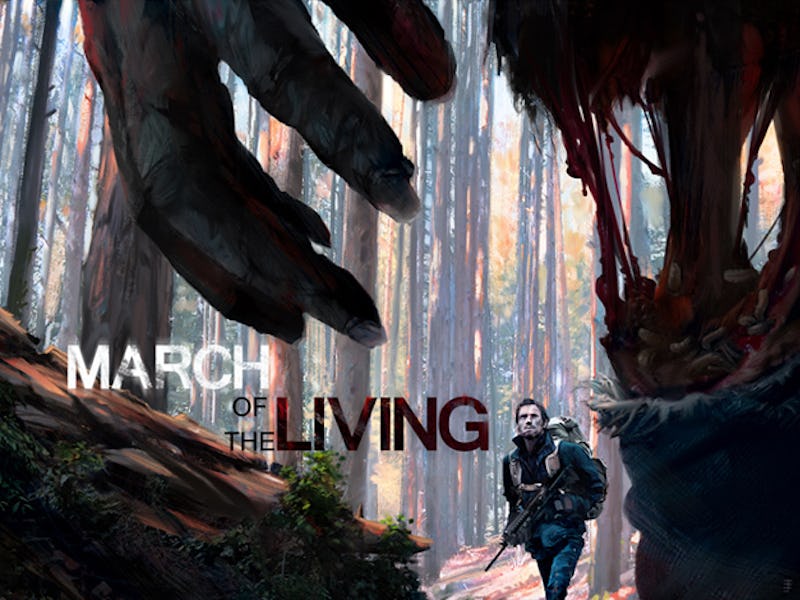Calculating the Odds of Survival in a Zombie Apocalypse
Role-play survival, but don't pretend that you'll survive.

I would die in a zombie apocalypse. Nothing I’ve seen in movies, television, or games can convince me that I have the necessary skills to survive an onslaught of cannibal corpses. Zombie games are sometimes seen as an approximate metric on which one can base his zombie survival skills, and none more so than March of the Living, a new roguelike Zombie RPG.
Described by the developers as heavily influenced by the sci-fi space RPG, FTL, March of the Living applies the same roguelike elements of item management, survival simulation, and combat as FTL to an apocalyptic zombie setting. This means the events, maps, and zombie encounters are randomized to deliver a truly chaotic experience, much like, I imagine, a real zombie apocalypse scenario.
The benefits to this approach as a role-playing experience are numerous. First, as a randomized series of events and encounters, March of the Living theoretically recreates the unlimited scenarios possible in a post-apocalyptic setting. It enhances the “reality” of uncertainty. Second, because items and supplies are also randomized, it intensifies the survival aspect of the game, making the chance of finding ammo, food, and medical supplies another coin toss. What all this randomization does encourage is the player’s ability to make tough decisions based on whatever random experiences he’s encountered or will encounter. With so many variables in play, and so many unsure outcomes happening simultaneously, March of the Living is best suited to represent a zombie apocalypse.
Games like these mostly appeal to the strategy buffs than they do gamers, who have a penchant for shooting enemies by the horde. I do like the anything-can-happen attitude of games which try to capture the chaotic nature of survival, and personally, this blunts the disappointment of in-game death because being dealt a bad hand is a comforting excuse for my character’s untimely demise.
March of the Living
Unfortunately, for a game such as this, is that if combat and scavenging seems rote, that’s because it sort of is. Combat is mostly repetitive, and scavenging often relies on a knowledge of statistics. This is where the narrative events come in to save the day. With supposedly over 160 unique events, the game will ask players how best to overcome road blockades, whether or not to engage a band of raiders, or rescue passersby on the road in danger. This is when, after weighing the ammo, health, and inventory, you decided the risk/reward of certain pre-selected actions. These are easily the liveliest portions of the game, and the parts that hand the player’s the most agency.
Ultimately it’s these bits that I think matter most in a survival game. The randomization is icing on the cake, but honestly even if the game was scripted, decision making is always a case-by-case scenario. That’s why a game that’s completely scripted like TellTale’s The Walking Dead game is so popular. By reducing a zombie apocalypse to a numbers game, March of the Living is essentially a fun survival calculator in which the player sporadically makes decisions and bets that will either increase or decrease their likelihood of survival. That’s fine and all, but I’m still convinced that in a real life situation, I’d probably still be offed. Probability be damned.